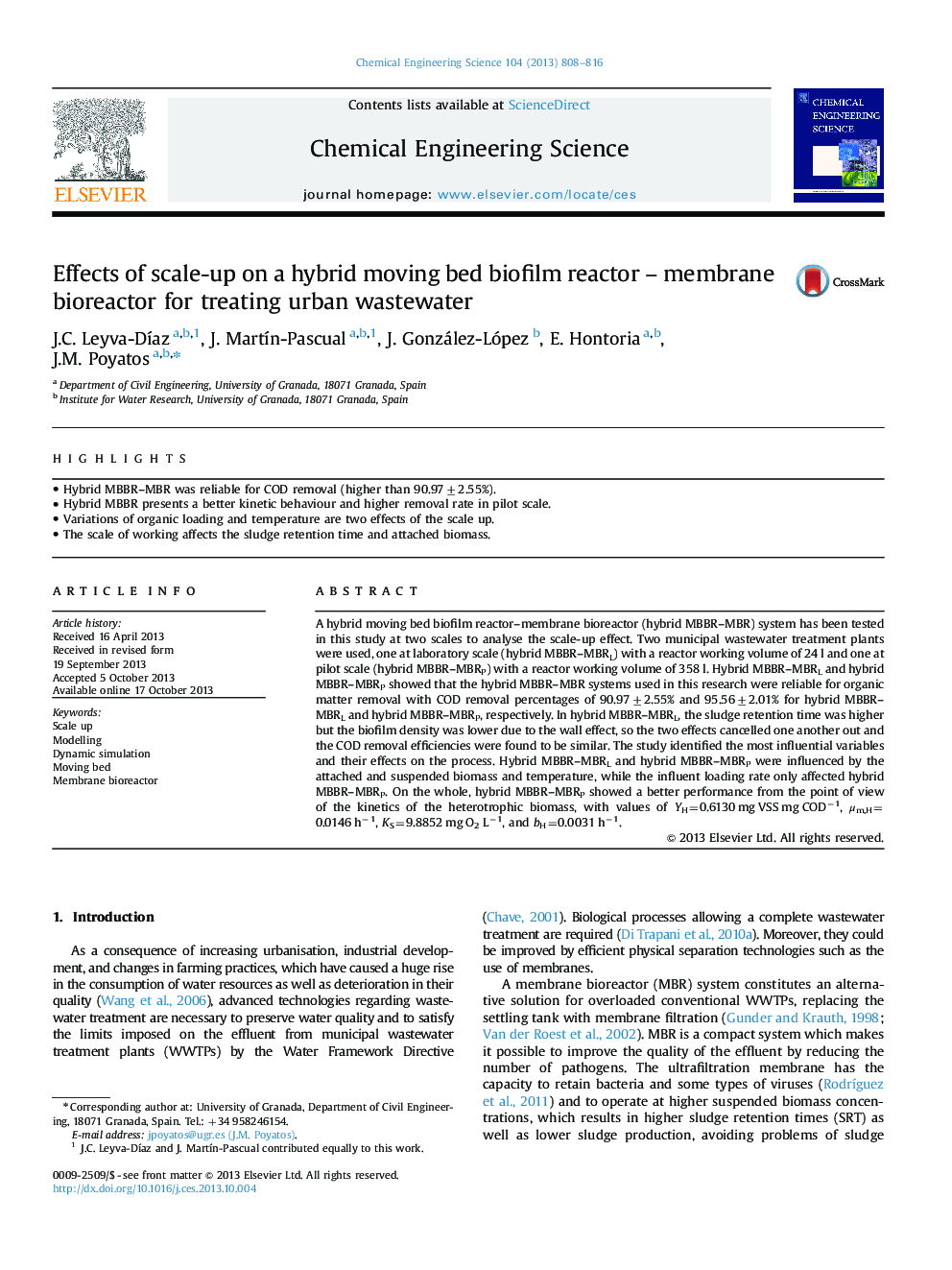| Article ID | Journal | Published Year | Pages | File Type |
|---|---|---|---|---|
| 6591633 | Chemical Engineering Science | 2013 | 9 Pages |
Abstract
A hybrid moving bed biofilm reactor-membrane bioreactor (hybrid MBBR-MBR) system has been tested in this study at two scales to analyse the scale-up effect. Two municipal wastewater treatment plants were used, one at laboratory scale (hybrid MBBR-MBRL) with a reactor working volume of 24 l and one at pilot scale (hybrid MBBR-MBRP) with a reactor working volume of 358 l. Hybrid MBBR-MBRL and hybrid MBBR-MBRP showed that the hybrid MBBR-MBR systems used in this research were reliable for organic matter removal with COD removal percentages of 90.97±2.55% and 95.56±2.01% for hybrid MBBR-MBRL and hybrid MBBR-MBRP, respectively. In hybrid MBBR-MBRL, the sludge retention time was higher but the biofilm density was lower due to the wall effect, so the two effects cancelled one another out and the COD removal efficiencies were found to be similar. The study identified the most influential variables and their effects on the process. Hybrid MBBR-MBRL and hybrid MBBR-MBRP were influenced by the attached and suspended biomass and temperature, while the influent loading rate only affected hybrid MBBR-MBRP. On the whole, hybrid MBBR-MBRP showed a better performance from the point of view of the kinetics of the heterotrophic biomass, with values of YH=0.6130 mg VSS mg CODâ1, μm,H=0.0146 hâ1, KS=9.8852 mg O2 Lâ1, and bH=0.0031 hâ1.
Related Topics
Physical Sciences and Engineering
Chemical Engineering
Chemical Engineering (General)
Authors
J.C. Leyva-DÃaz, J. MartÃn-Pascual, J. González-López, E. Hontoria, J.M. Poyatos,
